To the Sea of Japan
From Oeyamaguchinaiku to Miyazu along the Japan Standard Time Line
In my last post I called it devil country. The Japanese oni has a lot of the attributes of a devil - they’re often red and they have horns. In fact, there are various translations of the word oni - devil, demon, ogre, and it’s used to describe someone hard-hearted too. Ogre sounds too big, devil perhaps too evil, so maybe demon is the best description?
Today, I’m definitely headed into demon country. Just beyond the station at Oeyamaguchinaiku, there’s a demon statue, blue skin, leopard-print shorts, and a spiky metal mace (kanabo). There are more of these oni statues all along the road to Miyazu on the Sea of Japan coast. This range of mountains is the final hurdle to cross before reaching the sea. As well as the modern road, there’s an old road, lacking the hairpin bends of the current one, that cuts through the thickly-forested mountains in a way reminiscent of the Kumano Kodo pilgrimage route on the Kii peninsula.
Greeted by an oni at the station! This oni is apparently taken from a manga comic series and is called “Genki”
The road from the station winds its way up the Miyagawa valley, now so tight there’s no room for fields. It’s pretty much a canyon, the river swirls through rock pools of deep green, and the trees look like they’re about to slide off the rock face that lines the road. I’m alone, but here and there little white flat-backed vans are parked by the road and below them, men toil on fixing things that will keep this road passable.
The maples are out - startling green; the oaks too, their green tinged with an orangey-brown. I pass a dam, then out into open fields above a village. Even here, surely an area with one of the lowest population densities in Japan, I can hear an election van, loudspeaker noises bouncing off the mountainsides. A long election board of numbered squares shows a collection of middle to old-age faces and various colours of the candidates. A faded poster on one barn shows the Prime Minister - Kishida Fumio announcing that “Everybody will move together into a new era”. Next to the barn is an akiya house, shrubbery growing inside it like the one I saw on the previous day’s walking.
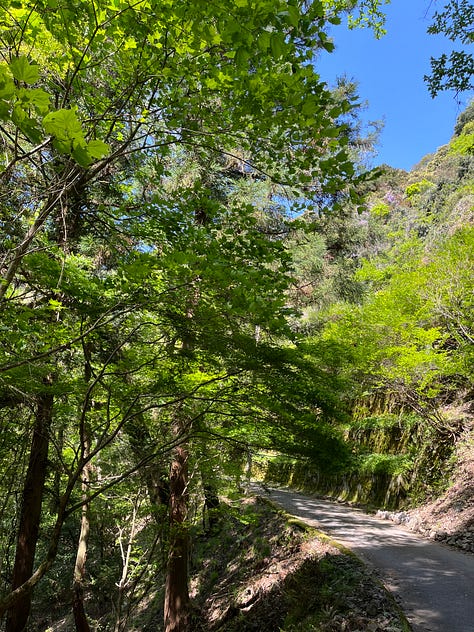
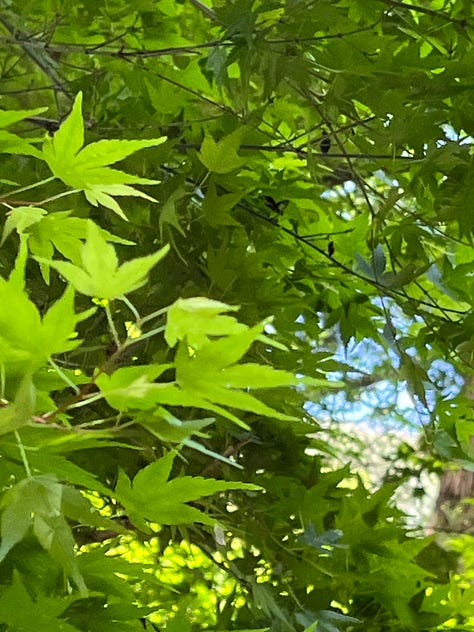
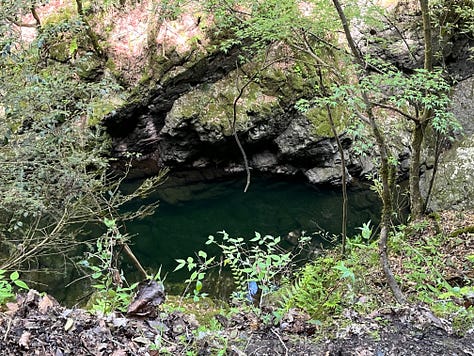
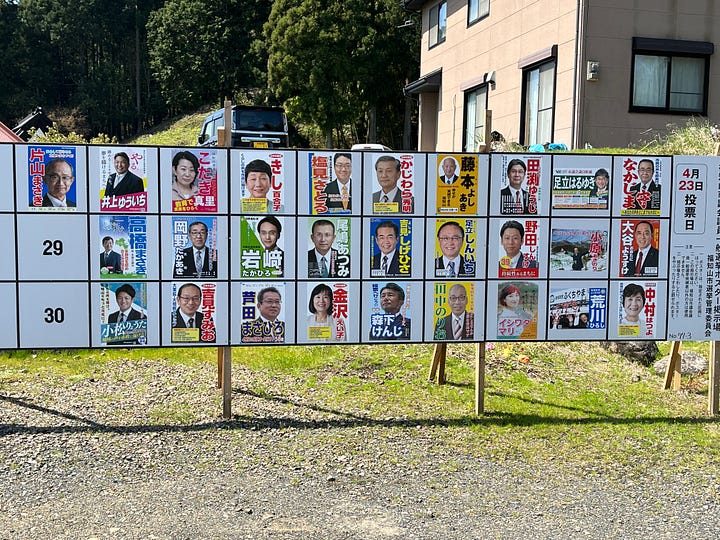
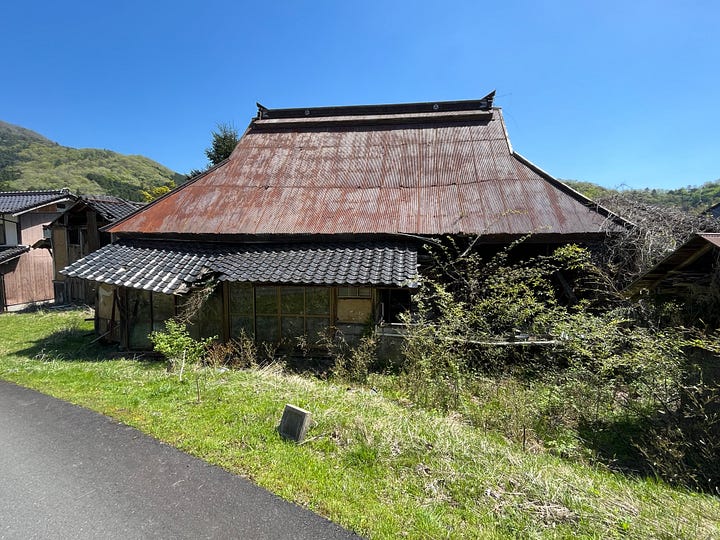
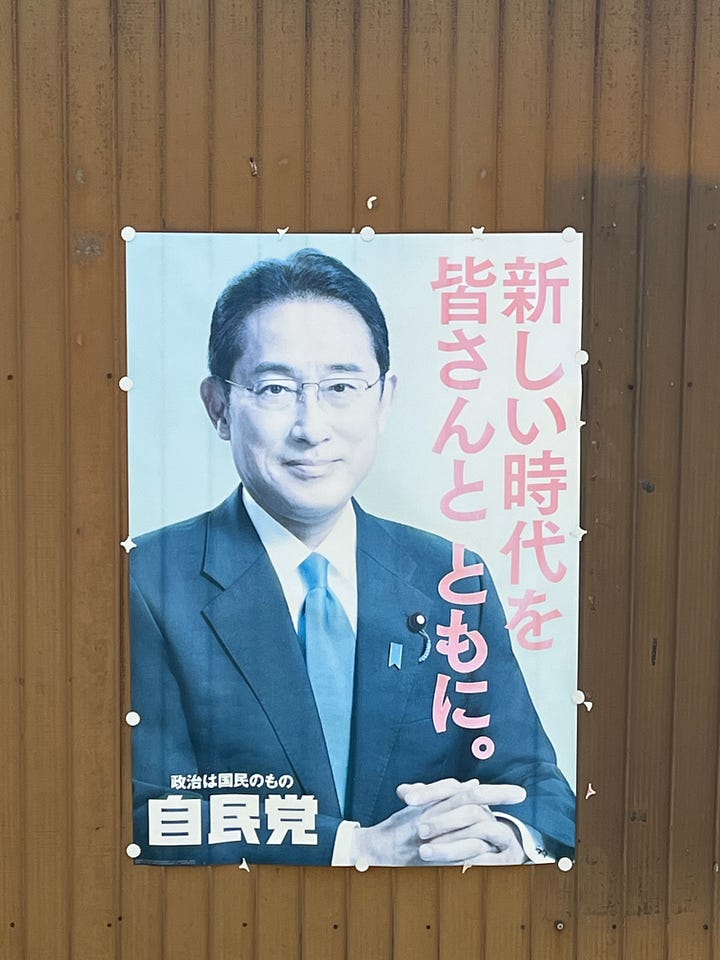
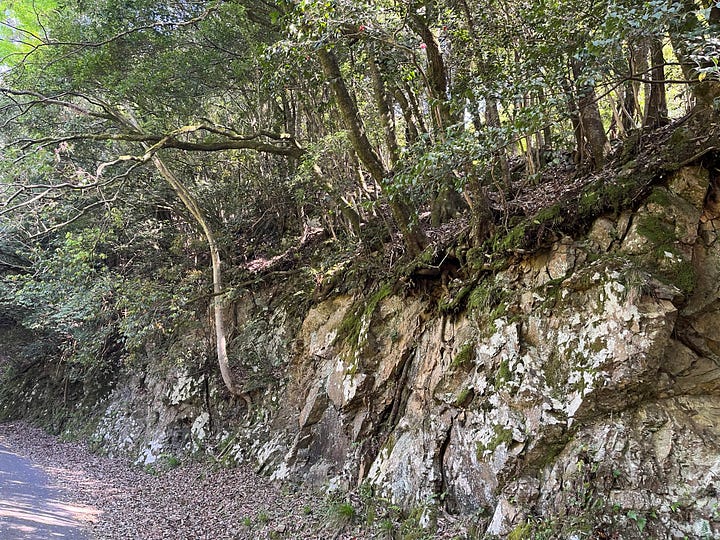
Then, I’m back on the main road. Luckily it’s quiet, only the odd car passes as I start up a series of hairpin bends. There’s a walking trail that runs parallel to the road, along the route of the old Miyazu road. A sign tells me to close the wire lattice gate properly as I enter the forest to avoid deer and wild boar getting into the vegetable fields. Whoever’s been before me has done a neat knot that is both secure and very easy to undo. I’ve no idea how to do a knot like this, so I do a long-remembered reef knot from boy scouts - left over right and under, right over left and under. It’s secure, but if the next person coming this way is over seventy, I don’t fancy their chances of undoing it.
A suspension bridge crosses the Miyagawa - once again in a gorge before a brief release among the fields of Oeyama village. It’s windy today, so the bridge is rocking in a way too alarming to take photos from. I’m hungry, but I have no food on me. I left home too early for even the convenience store to be open. Up a side road is the Oni Cultural Museum, and next to it a café. It doesn’t seem to be open, and anyway it only sells ice cream. It’s too cold for ice cream. I make do with a warm coffee from a vending machine. The museum is passably interesting - a collection of onigawara tiles that act like European gargoyles and ward off evil from roofs, a collection of oni masks, information on oni-like creatures from around the world and stories containing oni. Worth a visit if you’re passing by, but not worth going out of your way for.
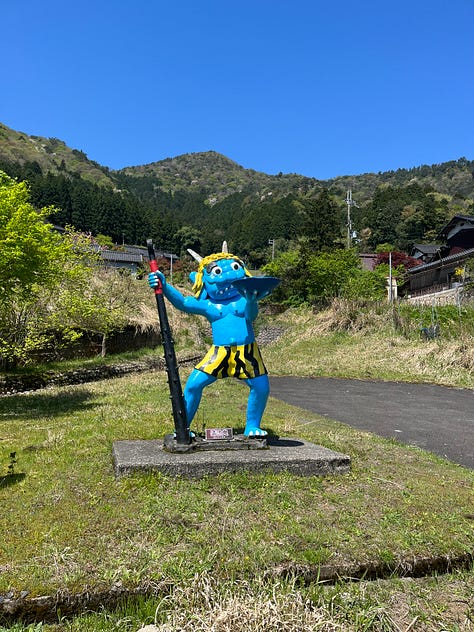
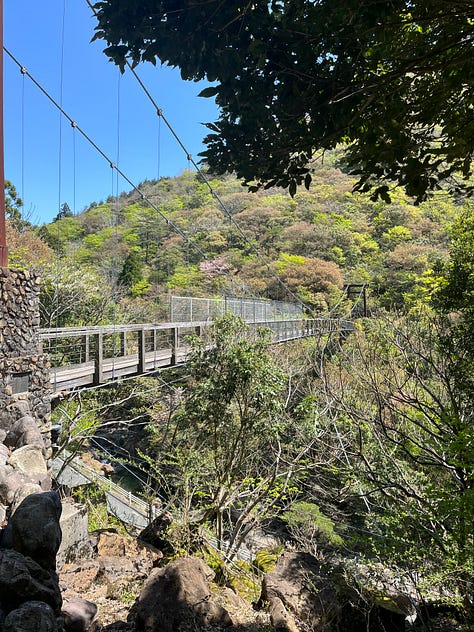

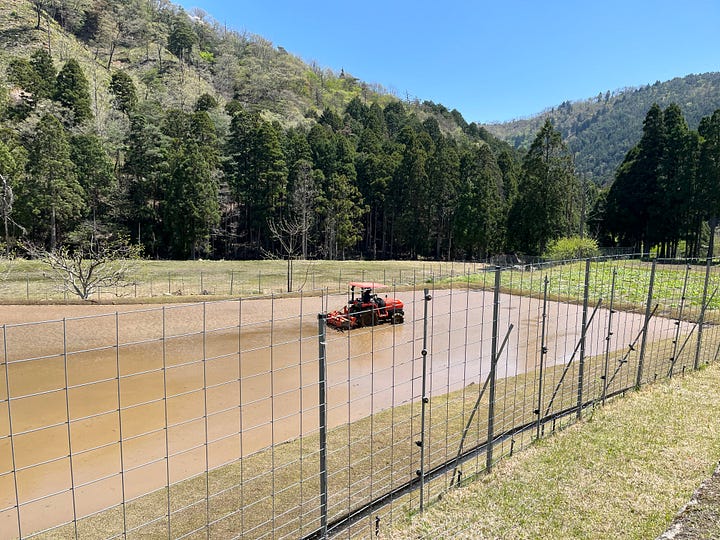

A bottle of water staves off the hunger pangs. I know I’m not getting any food until I get down in the valley that leads to Miyazu. More road walking, the strong wind gives a very clear sky and I’m conscious I’m going to get sunburned. I’ve not brought my sunhat with me. So when there’s an opportunity to walk through the forest rather than the open road, I take it. The old Miyazu road cuts straight through the cedar forest. Before I plunge into the forest, a farmer checking his water channels asks if I’m going to Miyazu.
“Hai, Miyazu ni ikimasu.” Yes, I’m aiming for Miyazu, but will I get there today?
“Ganbatte!” Is this because it seems unfeasibly difficult? I start to worry.
“Hai, ganbarimasu!”
And then I enter the forest. It’s dark, the ground covered with fallen needles and branches. Rivulets of water run down the path, welling into pools behind mini-beaver dams of cedar twigs. It’s steep, I can feel the strain on my calf muscles. The farmer didn’t warn me about bears, so presumably there’s none of those, but there might be wild boar. I clap sharply every few paces like I’m praying at a Shinto shrine. Nothing’s going to be startled by me. I meet the road a few times, preceded by an avalanche of ancient fly-tipped litter. Often it’s hard to figure out where the path is, but finally the original stone paving of the old road becomes clearer. Occasionally there’s a pink ribbon tied to a tree to show the way. I needn’t have worried about bears - under the cedars, the forest floor is a sterile wasteland of brown needles. There’s nothing for a bear or any other large animal to eat here.
The old Miyazu Road through the cedar forest
I burst out of the forest onto an old ski slope - a wide expanse of grass covered with little balls of deer poo, but with no visible route. The pink ribbons have disappeared and the only sign points back the way I have come. Where am I supposed to go? All I can do is head down the ski slope to what I take to be the entrance. What if there’s a fence, how will I get out?
Abandoned ski slope with ski lift and new solar farm
Luckily, there’s no fence, and just a few metres down the road, a brown sign points down a slope towards Miyazu station. The path is painfully slow-going. After heavy rain in the last few days, it has become a stream. Slippery rocks on a steep slope, all the dirt washed out from between them, so there’s no choice but to tread on the rocks. I’m wearing hiking sandals and waterproof socks. A good combination as it turns out. I know my hiking boots are super-slippery on wet rock, but the flex of the hiking sandal sole helps place my feet and the waterproof socks are so effective they don’t let in any water despite plunging my feet into gritty-bottomed pools to get some grip. In places, the path has been completely washed away so it simply doesn’t exist any more, but I manage to fight my way down and suddenly I can see the Sea of Japan! The other coast! I’ve walked all the way from the Inland Sea, and now I’m almost there at the other side of Japan!
The Sea of Japan and Miyazu city in the V between the mountains
Back to road walking, but all downhill. I can make it to Miyazu today! I pass an old house packed with rubbish, the owner giving me a hands-on-hip scowl as he pulls up in his van. Down in the valley, an old lady in a conical straw hat is ploughing a rice field ready for planting, egrets and herons stalking the little red tractor instead of the seagulls and crows of my native England.
Signposting on this walking route left a lot to be desired - frequently faded to invisibility and often pointing in wildly inappropriate directions
Miyazu city is pleasant. Flooding after a typhoon has given an opportunity for some of the town to get a makeover. There’s a nice park by the sea, and I eat my convenience-store-bought late lunch there surrounded by bursting pink azalea flowers. There are upmarket food vans and attractively paved paths. I follow the reed-lined river towards the train station. It’s time to go home, but I will be back, because although I’ve reached the sea, I’ve veered far to the right from the Japan Standard Time line and to meet it again where it hit the Sea of Japan coast will require a commensurate veer back to the right.
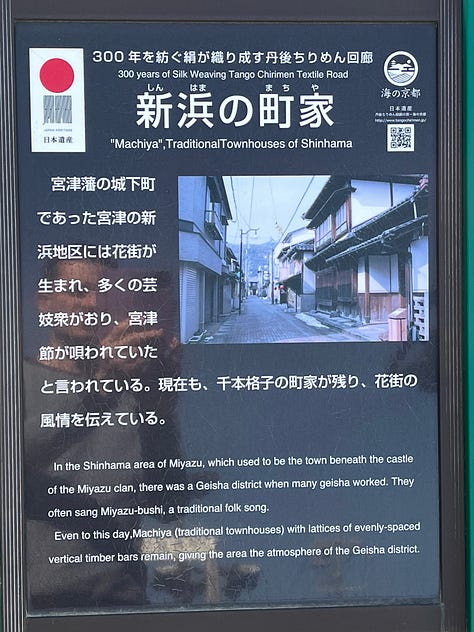
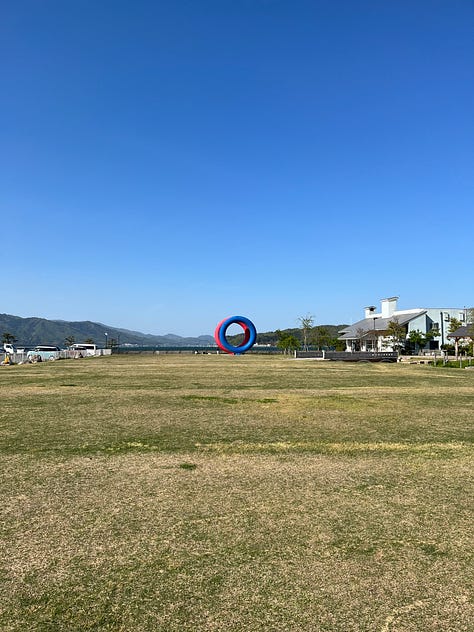
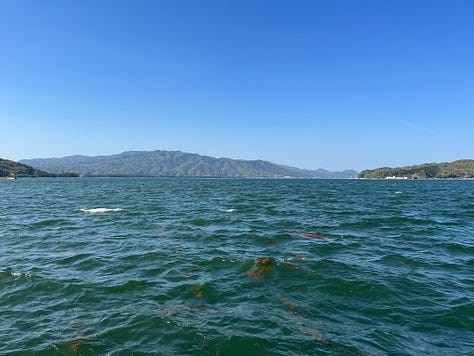
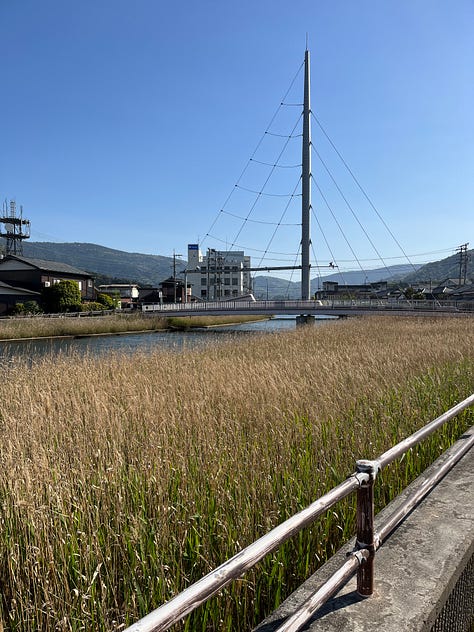
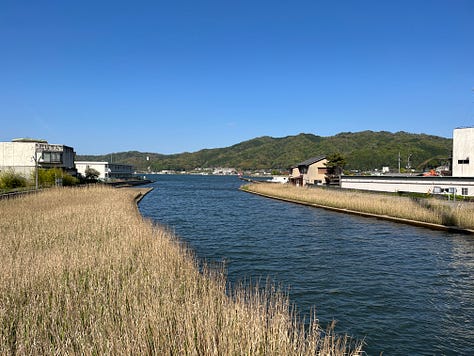
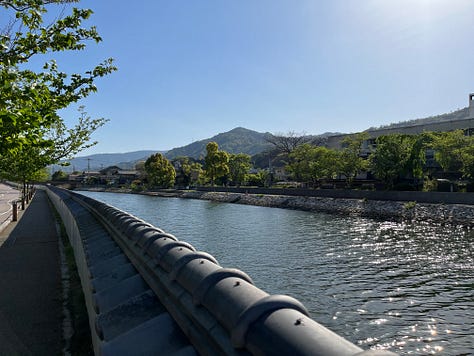






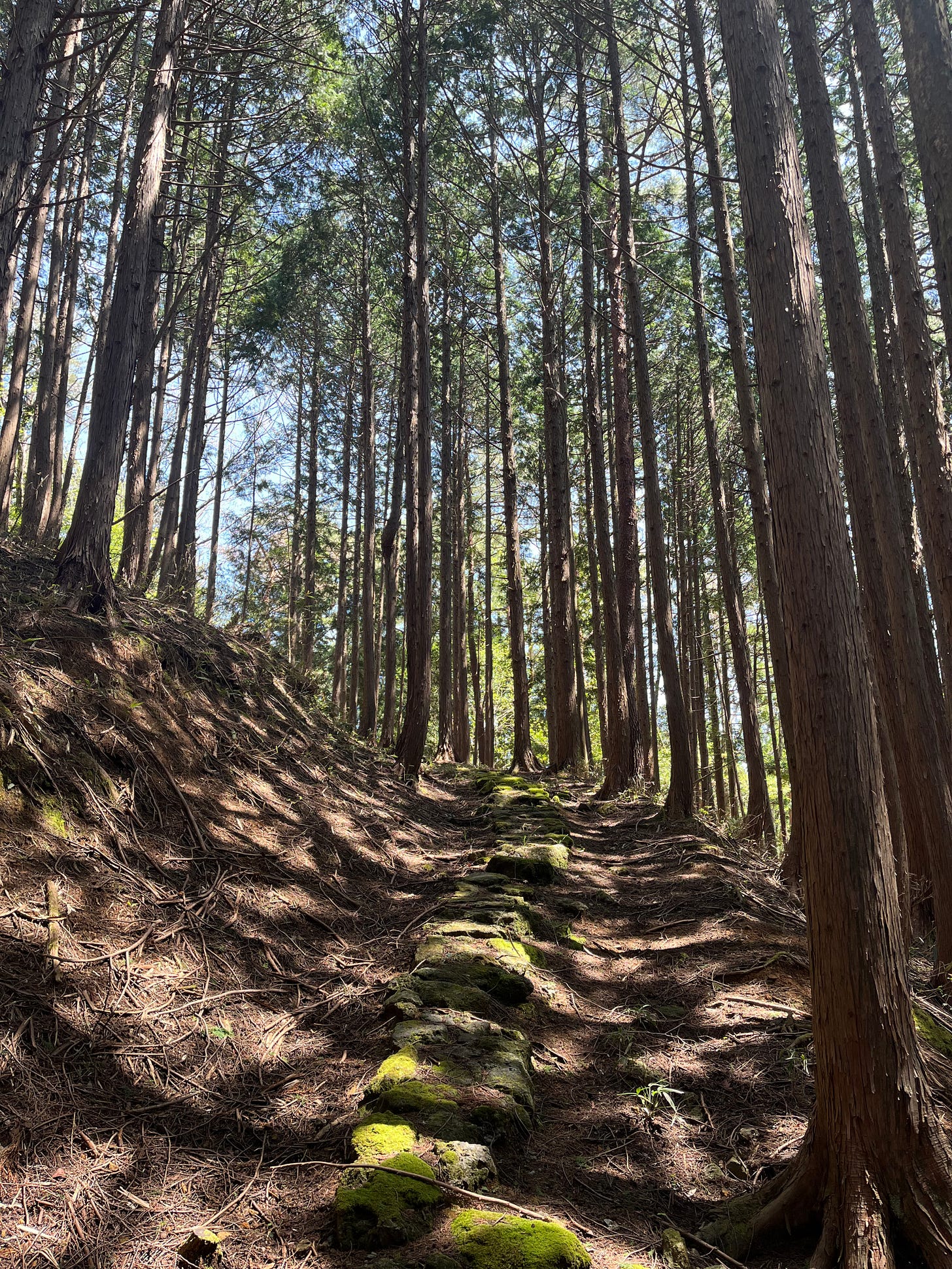

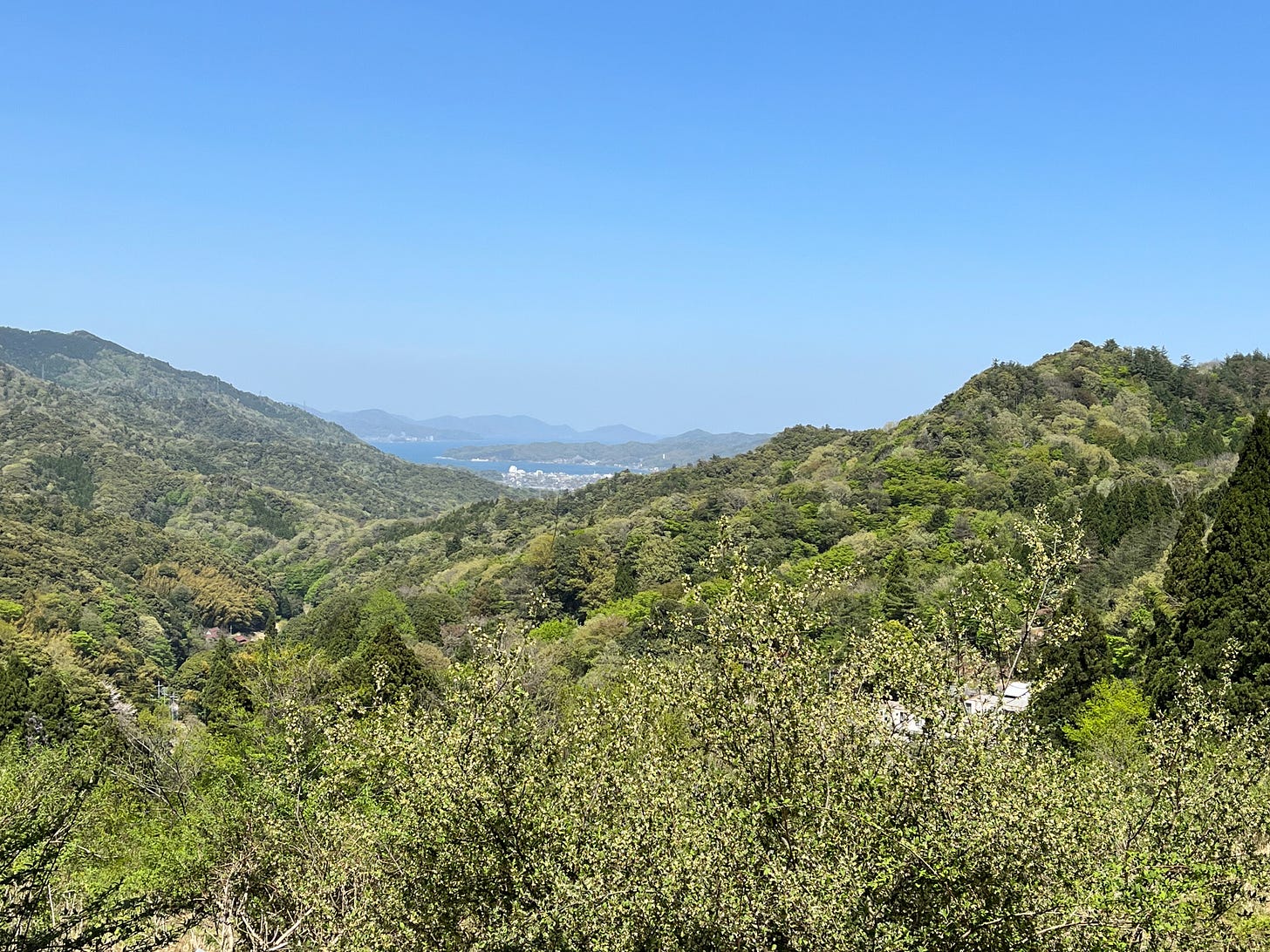
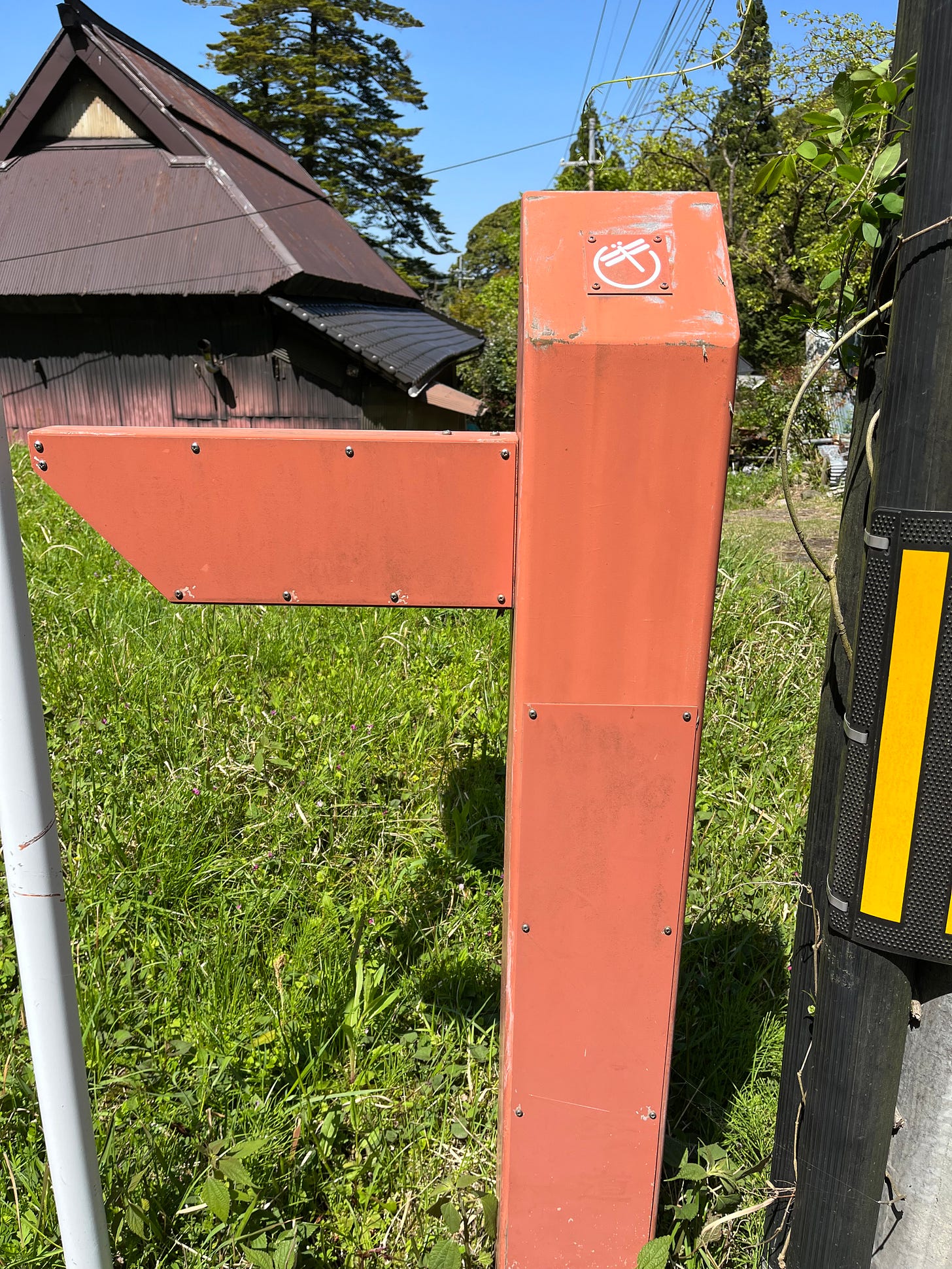
I never find any of the translations for Oni satisfying.
I think Ogre is the best, but they're still different creatures (they do serve similar purposes, though).
I like neither Demon nor Devil. Those are otherworldly creatures, whereas Oni "live" among us (well, at least in the legents).
So, usually, I keep "Oni" regardless of the language that I use (I do explain when necessary).
Great post by the way, I need to read the older ones.